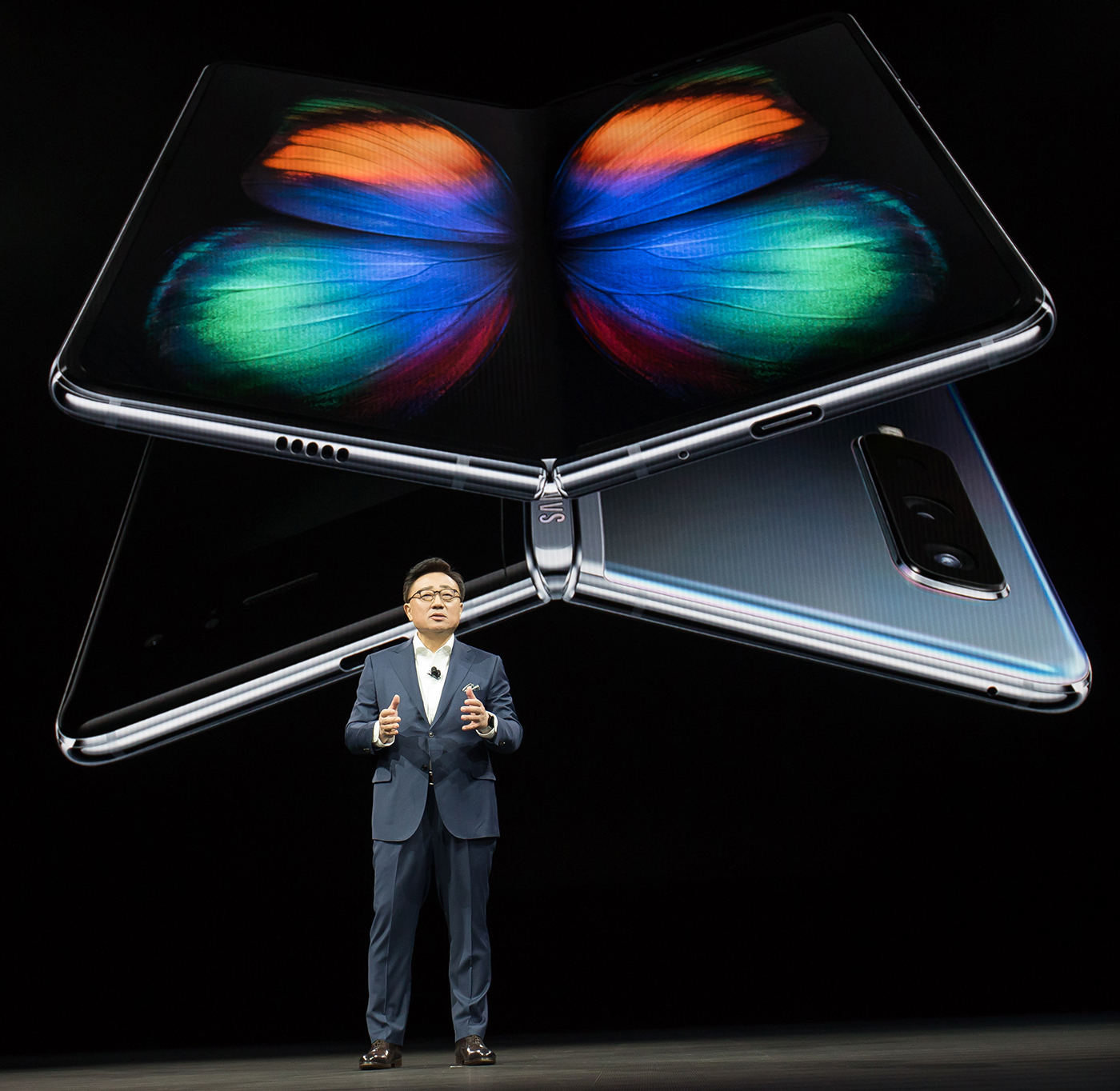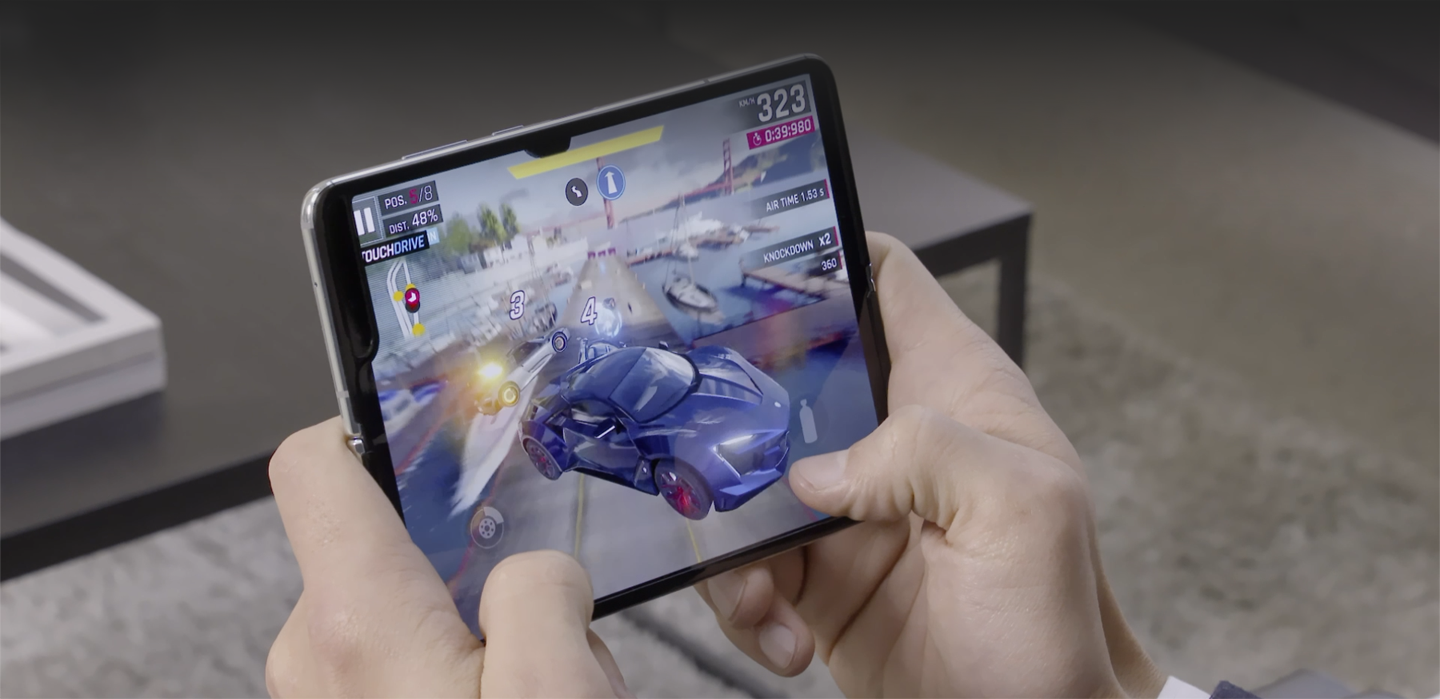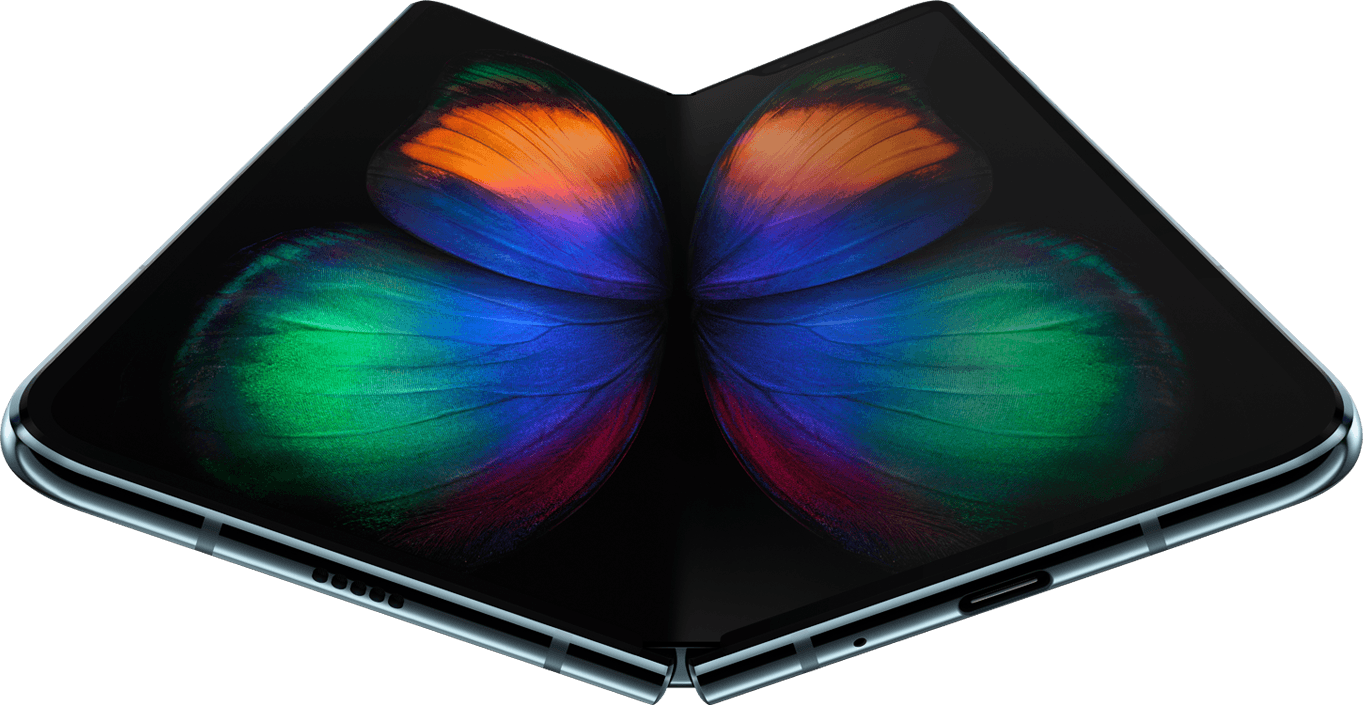Samsung Bets On Mobile ‘Future’ With Galaxy Fold, Galaxy S10

The folding-screen device is set to launch in April, with a hefty price tag of nearly $2,000 – more than twice that of the new Galaxy S10
Samsung has divided market watchers with its splashy introduction of the Galaxy Fold folding smartphone-tablet hybrid, with some saying its price tag of nearly $2,000 (£1,534) is likely to put lessen the device’s impact.
Most agreed, however, that the Fold, introduced this week ahead of the Mobile World Congress trade show, was an impressive feat of hardware engineering.
The $1,980 device features a 4.6-inch phone display that opens out to a single large 7.3-inch screen when the device is unfolded, with no fold lines visible.
The launch of the Galaxy Fold was designed to mark the 10th anniversary of Samsung’s Galaxy S range of flagship smartphones, and was introduced alongside a new line of Galaxy S10 devices.

5G smartphone
Those devices include the S10e, which bears a lower price tag than the other handsets in the range, a move to compensate for flagship devices’ ever-spiralling prices.
Samsung itself has acknowledged the premium price of its S9 devices contributed to lower-than-expected sales – although those devices also faced stiff competition from Chinese rivals including Huawei and Xiaomi.
The S10 and S10+ cost more than last year’s equivalents, beginning at £799 and £899 respectively, while the S10e starts at £699.
All three are planned for an 8 March release, with a 5G model, intended to offer faster speeds as soon as networks become available, is set to launch sometime in the summer.
CCS Insight analyst Ben Wood said the 5G variant would help give Samsung “the jump” on Apple and maintain its “perceived technology leadership”.
But he said for most consumers one of the 4G phones would be “probably a better investment, and will be viable for use for many years”.

‘Luxury’ folding screen
But it was the Galaxy Fold, described by Samsung as a “luxury” item, that took centre stage at the firm’s launch event, with the ability to run three apps at once and continuity features for switching between standard and expanded views.
On stage, Samsung demonstrated a Google Maps screen appearing on the Fold’s front display and then expanding to the larger view with a one-second pause.
It said WhatsApp, Facebook, YouTube and Microsoft Office would be similarly optimised for the new format.
“To those who say they’ve seen it all, I say, buckle your seatbelt, the future is about to begin,” said Samsung mobile head DJ Koh at the launch event.
The Fold includes a battery on each side to boost usage time and contains a total of six cameras, three on the back, two on the inside and one on the front, enabling it to take photos whether folded or unfolded.
It also uses a newly developed, hard-wearing concealed hinge system that can bear up under hundreds of thousands of folds, Samsung said.

Potential and uncertainty
A 4G version of the device is set to go on sale on 26 April, with a 5G model coming later.
Many industry watchers said the Fold’s launch was a landmark event, with associate IDC vice president Francisco Jeronimo calling it “one of those announcements that will reshape the future of smartphones”.
Creative Strategies analyst Carolina Milanesi said the device has “a lot packed in there” and could give users a large screen with “no compromise on the phone experience”.
But others said the high price tag was likely to relegate the Fold to the realm of an interesting idea, with Strategy Analytics’ Neil Mawston comparing foldable phones to the dual-screen folder phones released by ZTE and NEC.
“There’s good potential, but still a lot of uncertainty,” Mawston said.
Huawei and Xiaomi are expected to announce folding-screen phones within weeks, while Royole released a developer version of the FlexPai folding phone last year.

No notch for Galaxy S10
On the more practical side, Samsung is focusing on the Galaxy S10 as its flagship handset release, which raised some eyebrows with their departure from the iPhone X-style “notch”, which has now become practically standard.
Instead Samsung added a hole punch-style round or oblong cutout in the upper-right corner of the screen, officially called the “Infinity O” design.
It serves the same purpose as the notch, allowing the screen to wrap around the device’s front-facing sensors.
The new S10 devices feature an ultrasonic fingerprint sensor placed under the screen in place of the iris scanner found in the S8 and S9 – although the new sensor isn’t found in the S10e.
They follow Huawei’s lead by adding wireless charging and the ability for the device to wirelessly charge other gadgets, such as Bluetooth headphones.
All four S10 devices feature a 10 megapixel front-facing camera and a 16MP “ultra-wide” rear version, while the S10+also includes a second selfie camera for depth readings.
The S10+ and S10 5G now offer up to 1 TB of internal storage, which could prove popular for those recording large amounts of 4K video or storing many game files.
